I have data as follows:
dat <- structure(list(rn = c("type_A", "type_B", "type_C"
), freq = list(c(0, 0, 0, 5, 7, 16, 28), c(2, 1, 0, 5, 0, 8),
c(0, 0, 3, 5, 12, 53, 73)), colspan = list(c(`25` = 1, `100` = 2,
`250` = 1, `500` = 1, `1000` = 1, Infinity = 3, SUM = 1), c(`25` = 1,
`100` = 2, `250` = 1, `500` = 1, Infinity = 4, SUM = 1), c(`25` = 1,
`50` = 1, `100` = 1, `250` = 1, `500` = 1, Infinity = 4, SUM = 1
))), row.names = c(NA, 3L), class = "data.frame")
total_colspan = c(0, 25, 50, 100, 250, 500, 1000, 1500, 3000, "Infinity", "SUM")
rn freq colspan
1 type_A 0, 0, 0, 5, 7, 16, 28 1, 2, 1, 1, 1, 3, 1
2 type_B 2, 1, 0, 5, 0, 8 1, 2, 1, 1, 4, 1
3 type_C 0, 0, 3, 5, 12, 53, 73 1, 1, 1, 1, 1, 4, 1
I would like to create a table with varying column spans (but they all add up to 10), in an R-markdown Word document, like the table below:
I was advised to try flextable for this (link). I am trying to use the header options to create these varying colspan. I thought about doing something like:
dat_table <- flextable(dat)
dat_table <- lapply(dat_table, add_header_row, values = unlist(freq), colwidths = unlist(colspan))
But this is not working.
EDIT:
My second attempt:
dat <- structure(list(rn = c("type_A", "type_B", "type_C"
), freq = list(c(0, 0, 0, 5, 7, 16, 28), c(2, 1, 0, 5, 0, 8),
c(0, 0, 3, 5, 12, 53, 73)), colspan = list(c(1, 2, 1, 1, 1, 3, 1), c(1, 2, 1, 1, 4, 1), c(1, 1, 1, 1, 1, 4, 1
))), row.names = c(NA, 3L), class = "data.frame")
# The thresholds as in the picture
thresholds <- data.frame(c("Lower threshold","Upper threshold"), c(0,25), c(25,50), c(50,100), c(100,250), c(250,500),c(500,1000),c(1000,1500),c(1500,3000),c(3000, "Infinity"), c("", "SUM"))
names(thresholds) <- c("One", "Two", "Three", "Four", "Five", "Six", "Seven", "Eight", "Nine", "Ten", "Eleven")
thresholds <- flextable(thresholds)
# There was one column to few in the example
dat <- transform(dat, colspan=Map('c', 1, dat[["colspan"]] ))
dat <- transform(dat, freq=Map('c', "", dat[["freq"]] ))
# for loop to stick to the syntax
for (i in nrow(dat)) {
thresholds <- add_header_row(thresholds, values = dat[[2]][[i]], colwidths = dat[[3]][[i]])
}
For some reason it only adds one row (while it allows for more headers to be added).




